The Common Wombat (Vombatus ursinus) is one of Australia's most endeared native marsupial species. Known for their playful nature and backwards-facing pouches, the Common Wombat is a choice encounter for many visitors to Australia!
Where is the Common Wombat found in Australia?
Common Wombats are found across south-eastern Australia, which includes Victoria, New South Wales, south-eastern South Australia, the island state of Tasmania and its surrounding islands.
They prefer wet, forested areas or grasslands with slopes to help water drainage from their burrows.

Image: womsat.org.au
What does the Common Wombat look like?
Common Wombats are large, 'barrel-shaped' marsupials which weigh 20-30kg (44-66lb) when fully grown. Their coarse, fur coat varies in colour from grey to brown.
Other notable features are their large heads, short strong necks and powerful shoulders which help them burrow. Daniel Fisher, a guide with The Maria Island Walk, has observed old tunnels collapsing and says they go on for 20-30 metres (65-100ft) at depths of up to 2 metres (6ft) underground!
Females have backward-facing pouches that protect their young from flying dirty during burrowing.
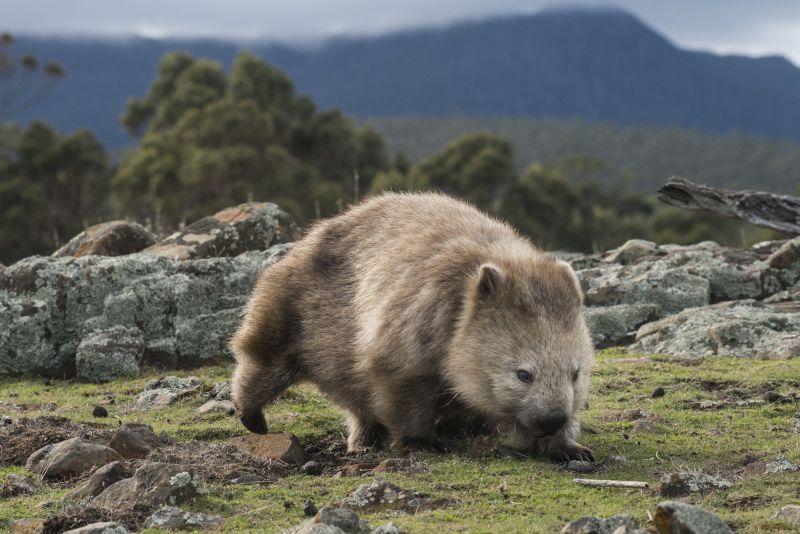
Image: The Maria Island Walk
The Common Wombat diet
Common Wombats are herbivores, so their diet is generally made up of native grasses. When this primary food source is harder to find, they will also eat roots and denser, more fibrous plants. They will occasionally tear strips of bark from trees to chew, as well.
Common Wombats also have incisors (a set of sharp teeth, similar to that of rodents) which continue to grow throughout their lifespan. These incisors are gnawed down by some of those tougher plants.
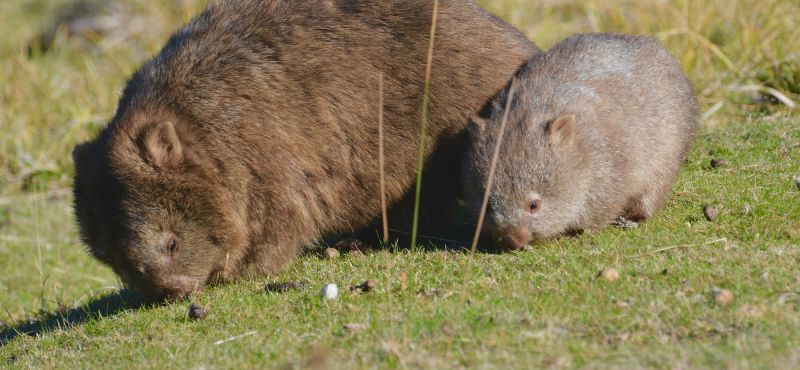
Image: The Maria Island Walk
Aren't they nocturnal?
Common Wombats are most active during the nighttime, but they do feed early and late in the day when the temperature is cooler. Boutique Wildlife Tours' Southern Highlands Wildlife Day Tour departs Sydney around midday and returns in the late evening, which gives guests the opportunity for some fantastic nocturnal Common Wombat encounters. In Tasmania due to the cooler conditions, you can see wombats venture out during the day!
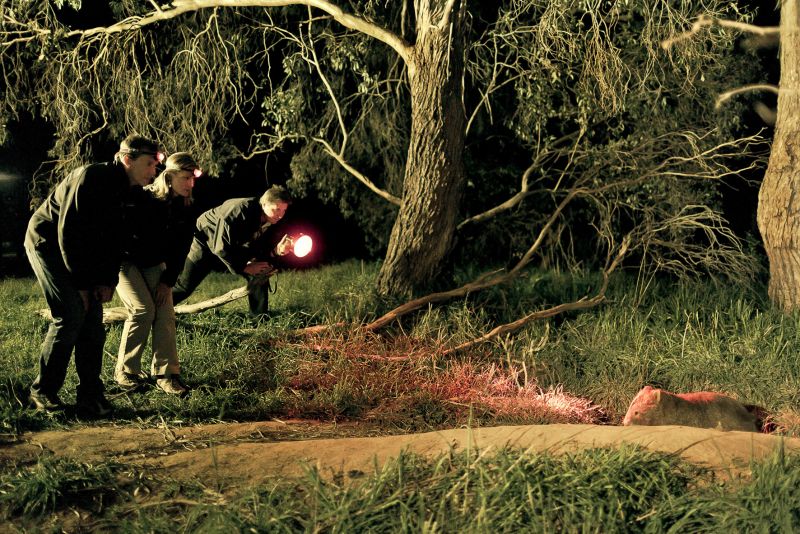
Image: Boutique Wildlife Tours
Common Wombat breeding
In a habitat with plenty of food and water, females will produce one young 'joey' per year.
Mating occurs from August through to February, which is the Australian spring/summer. During this time, males will become more vocal and will be seen fighting with competing males in order to win over the female of common interest.
Following a gestation period of only one month, the young joey is born and will find the way to the mother's pouch to attach itself to the milk teat.
As the joey grows, it will spend more time out of the mother's pouch, often found clinging onto the back.
Once old enough, the young will leave their mother to become solitary.
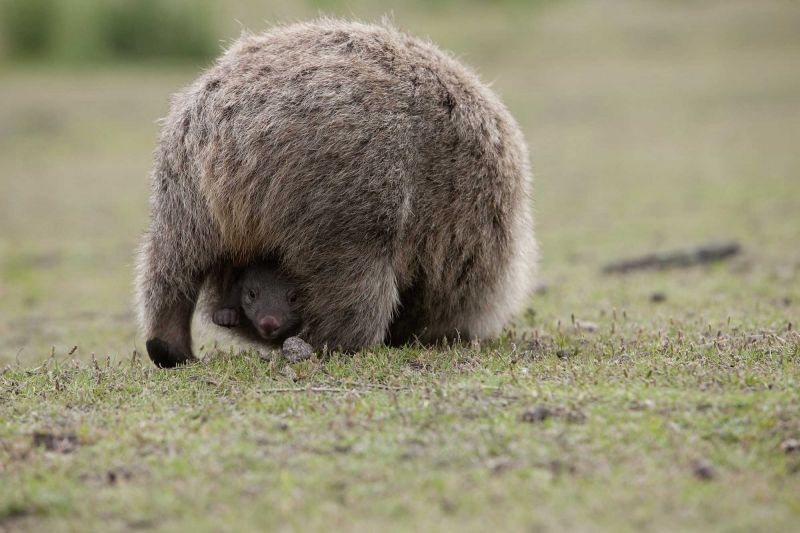
Image: The Maria Island Walk
Where can I see the Common Wombat with an expert guide?
The Maria Island Walk (4D/3N)
Operator: The Maria Island Walk
Region: Maria Island, Tasmania
This four-day guided walk across magnificent Maria Island, combines intimate wildlife encounters, fascinating history, pristine white sand beaches, and locally sourced gourmet food.
8 Day Tasmania Wildlife Encounters (4D/3N)
Operator: Premier Travel Tasmania
Region: Tasmania
Tasmania is a delight for Marsupial lovers! Discover Tasmania's breathtaking eastern region, including Freycinet National Park, Mt Field National Park and the Tasman Peninsula.
Southern Highlands Wildlife Day Tour (1D)
Operator: Boutique Wildlife Tours
Region: Southern Highlands, New South Wales
Venture to the pristine bushland of the Southern Highlands, just 90 minutes from Sydney, to observe several of Australia's most iconic species in the afternoon and evening!
East Gippsland Wildlife Journey (4D/3N)
Operator: Echidna Walkabout Nature Tours
Region: East Gippsland, Victoria
Venturing across East Gippsland’s magnificent lush rainforests, coastal heathlands, giant eucalypt groves, white sandy beaches and pristine rivers and estuaries, this four-day immersive adventure offers you encounters with an incredible array of species.
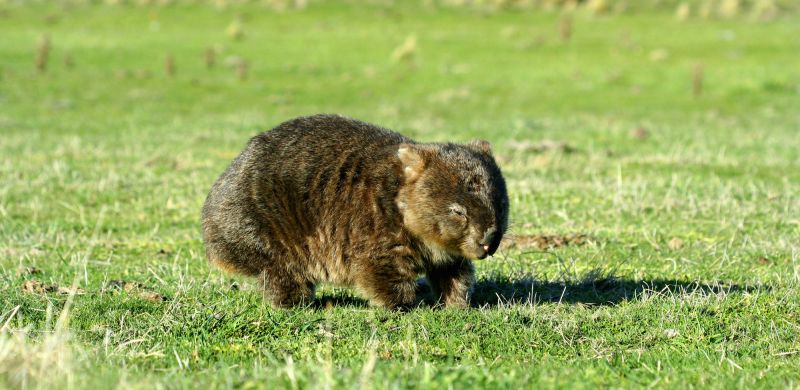
Image: Boutique Wildlife Tours
Frequently asked questions about Common Wombats
Q: How fast can the Common Wombat run?
A: Although they look slow, they can actually run at speeds of 40km/hr (25mi/hr) and maintain that speed for up to 90 seconds!
Q: Which animal is the Common Wombat's closest relative?
A: The Koala! Both marsupial species have backward-opening pouches.
Q: Is it true that Common Wombats don't sweat?
A: Yes! This is part of the reason why they burrow underground and only come out at night or occasionally during cooler temperatures during the day.
Q: What is the difference between the Common Wombat and the Northern and Southern Hairy-nosed Wombats?
A: The Common Wombat typically has smaller ears, a more rounded head and an absence of hair on the nose, whereas the Northern Hairy-nosed and Southern Hairy-nosed species feature large areas and, as the name suggests, hairy noses! These species also feature softer fur, compared to the Common Wombat which has coarser hair-like fur.

